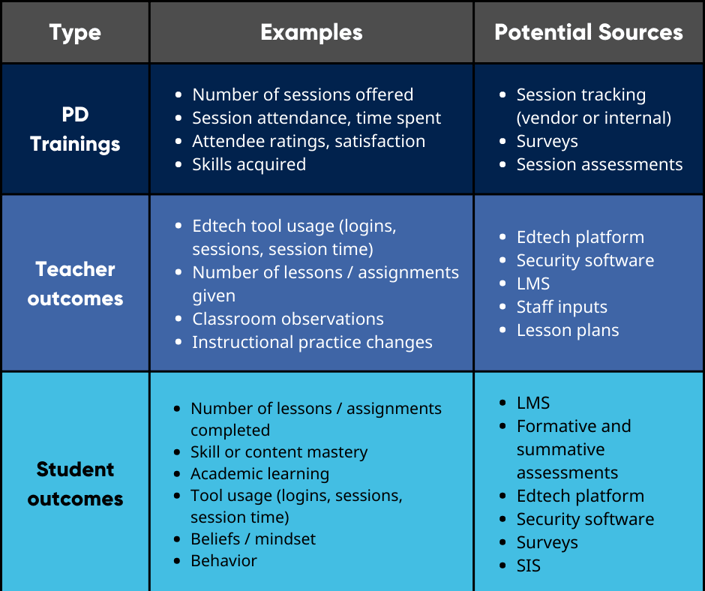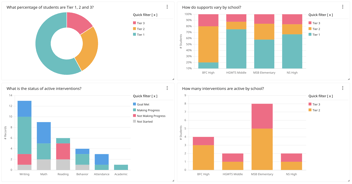

Published: September 19, 2022
School districts, like many employers, routinely invest in professional development (PD) for their teachers and administrators. Like other investments, districts want to measure their PD efficacy to ensure it's having a positive impact.
In these PD sessions, educators learn about new curricula, data-driven instruction, classroom management techniques, EdTech tools, safety measures, and more. The overarching goals of PD include skill-building, retention, and ultimately, better learning outcomes for students.
Why is it important to measure PD efficacy?
The $18 billion annually spent by K12 districts in the U.S. is significant. The collective time spent in PD sessions is also considerable. Naturally, administrators and school boards—as well as the public—are looking for ways to ensure that the return on this investment is positive. Ideally, this return is higher than alternative projects. Many districts want to dig into questions like:
- Is this PD a good use of our time and money resources?
- Did our staff learn what we hoped they would during the sessions?
- After completing the PD, are teachers deploying the new skills or techniques in classrooms?
- How much are students and teachers benefitting from the PD?
What kind of data do you need?
Districts can gather many types of data to measure the efficacy of PD, depending on its goal. Take PD on a new EdTech tool, for example. Districts should measure whether teachers’ and/or students’ usage of that tool changes as desired afterward.
Or let's say the purpose of PD is to train teachers on how to incorporate project-based learning into their lesson planning. Then, measuring how many PBL lessons happen after the training is a good idea. Even better, go beyond the number of PBL lessons and measure the impact those lessons ultimately have on student learning.

Given the large time and money costs required for PD, district teams really should prioritize doing at least a basic evaluation of sessions. Some districts may only be able to look at one or two metrics, such as number of sessions, number of attendees, and qualitative attendee feedback. That is definitely a good start. But ideally, they will take further steps to tie these PD inputs to learning outputs.
However, interoperability constraints make it difficult to find and access data. As such, some district administrators throw up their hands and skip PD evaluation entirely.
A better way to measure PD efficacy
Fortunately, Schoolytics can support districts in solving these challenges. With the ability to pull data in from multiple systems, Schoolytics belongs in every district’s PD efficacy evaluation toolkit. The Schoolytics platform can combine data from typically siloed sources—like surveys or Google Forms spreadsheets—with any other student or teacher data. In addition, the powerful metrics derived from LMS data on assignments—plus the metadata such as tool usage and standards—offer districts an unmatched ability to assess their PD investments.
Related Articles



Enhancing MTSS with Student Data: A Comprehensive Approach
A well-implemented Multi-Tiered System of Supports (MTSS) framework is a key tool for schools and...
